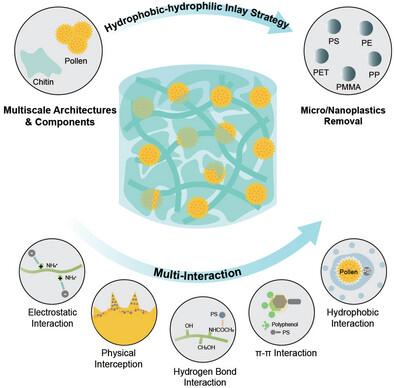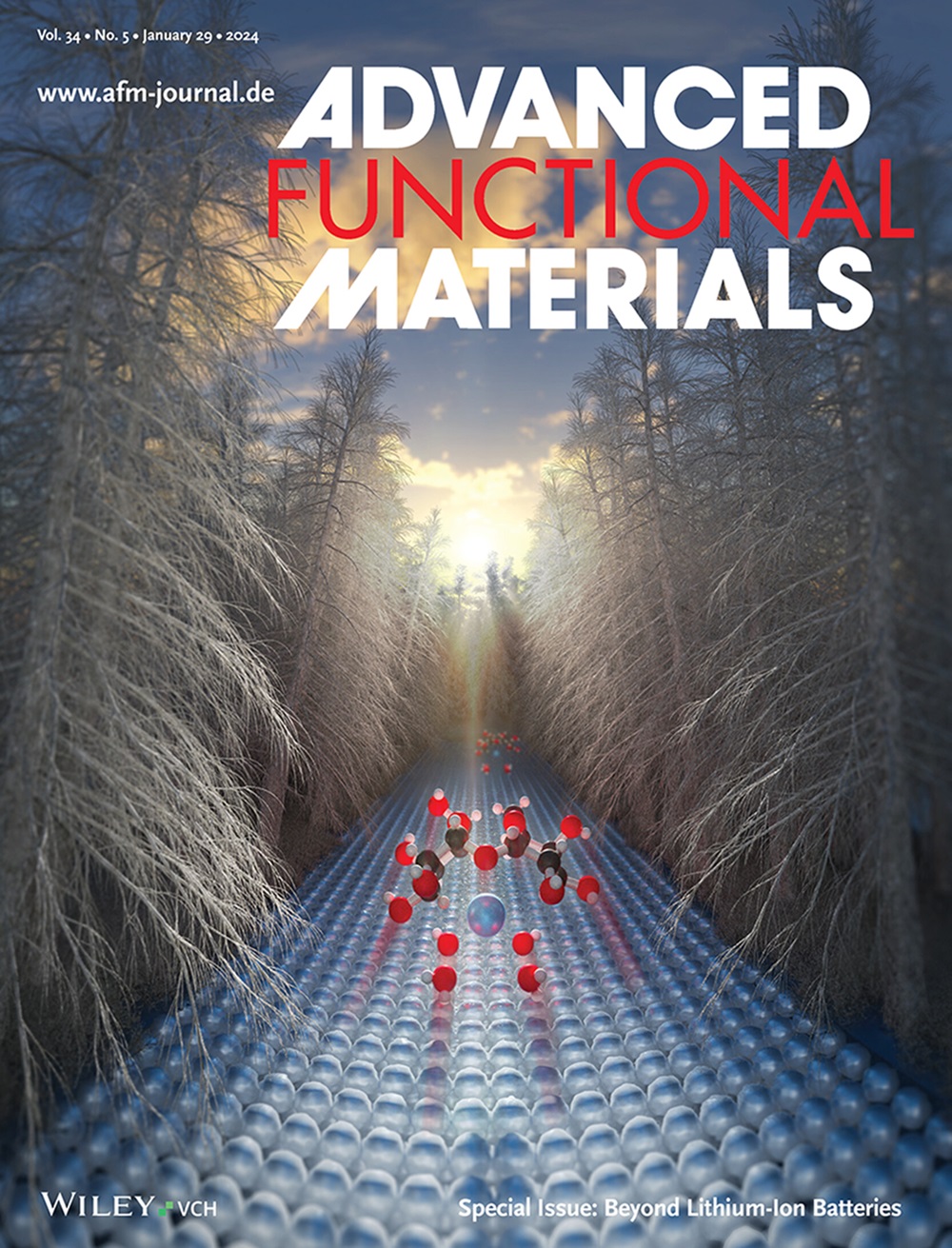Inherently Micro/Nano-Patterned and Hydrophobic-Hydrophilic Inlay Natural Material Assembly for Efficient Nanoplastics Removal
IF 18.5
1区 材料科学
Q1 CHEMISTRY, MULTIDISCIPLINARY
引用次数: 0
Abstract
The biological and environmental hazards of nanoplastics are increasingly recognized, driving the need for effective and sustainable removal methods. Hydrophobic adsorbent materials with high surface areas are promising for capturing hydrophobic nanoplastics, yet achieving these properties in an eco-friendly, energy-efficient manner remains challenging. In this study, we turned to nature and proposed a synergistic hydrophilic-hydrophobic inlay strategy that employs hydrophilic bio-macromolecule β-chitin to assemble bio-microparticle pollen featuring inherent hydrophobicity and micro/nano-patterns. The resulting pollen-chitin sponge possesses a porous, hydrophobic architecture enriched with unique components such as aromatic rings and acetylamino groups. This assembly promotes strong interpenetration and interconnection between hydrophobic particles and hydrophilic lamellae, enhancing the interaction among hydrophobic pollen particles, water, and nanoplastics. The optimized arrangement of adsorption sites enables high-efficiency nanoplastics removal, achieving an adsorption capacity of up to 236.30 mg g−1. The removal process is primarily driven by hydrogen bond interaction, hydrophobic interaction, physical interception, and π–π interaction. As a result, it successfully purified wastewater contaminated with multi-plastic particles and showed advantageous potential for removing various hydrophobic pollutants. Furthermore, sustainable recycling performance is demonstrated. The natural co-assembly system represents a practical, sustainable combination of multi-scale and multi-component biomass materials for mitigating hydrophobic pollution.

求助全文
约1分钟内获得全文
求助全文
来源期刊

Advanced Functional Materials
工程技术-材料科学:综合
CiteScore
29.50
自引率
4.20%
发文量
2086
审稿时长
2.1 months
期刊介绍:
Firmly established as a top-tier materials science journal, Advanced Functional Materials reports breakthrough research in all aspects of materials science, including nanotechnology, chemistry, physics, and biology every week.
Advanced Functional Materials is known for its rapid and fair peer review, quality content, and high impact, making it the first choice of the international materials science community.
 求助内容:
求助内容: 应助结果提醒方式:
应助结果提醒方式:


